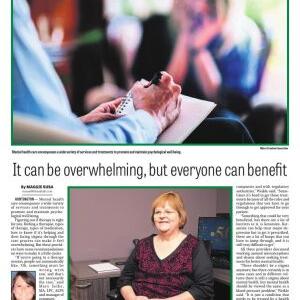Headlines assert that the reforms Republicans recently passed amount to a trillion-dollar cut to Medicaid. The New York Times calls this the most significant cut to federal health care spending in history. Is that so?
Maybe not. There are reasons to question whether cuts are actually happening, or if they are, who bears responsibility for the reduction.
Of the $1 trillion in �����Ƶ�cuts�����Ƶ� to Medicaid, $167 billion is coming from a 10-year delay of two Joe Biden rules that were finalized in 2023 and haven�����Ƶ�t taken effect, both aimed at making re-enrollment procedures more permissive for different groups. It�����Ƶ�s a stretch to characterize as a �����Ƶ�cut�����Ƶ� spending increases that have not occurred, especially when these increases come from the prevention of states identifying people no longer eligible for the program.
An additional $191 billion in alleged spending cuts concerns provider taxes, a complex issue that major news networks don�����Ƶ�t understand. States fund Medicaid by taxing providers �����Ƶ� hospitals and doctors �����Ƶ� and then paying that money back to the same providers. That enabled states to claim this as a Medicaid expenditure and collect the matching funds from the federal government.
This fake accounting, facilitated by provider taxes, allowed states to spend money on Medicaid without actually incurring their expenses. Understanding this potential for abuse, Congress passed a law saying that such use of provider taxes would not qualify for the matching federal funds decades ago.
Unfortunately, there was an exception. �����Ƶ long as the provider tax levy stayed below 6%, the government would look the other way. Because the Affordable Care Act (Obamacare) offered states a much more generous match of $9 for every $1 the state spent on the expansion population, states started looking for ways to boost their provider taxes while staying under the 6% threshold that triggered closer scrutiny.
Of course, the states remained free to tax providers at any rate they wanted �����Ƶ� 6%, 50%, 150% or more. Still, if they did so, the government would take a close look to make sure that they weren�����Ƶ�t funneling that money back to the providers to enhance their federal intake.
That�����Ƶ�s why the legislation reduces that 6% threshold to 3.5%, which in the past, President Obama, the Washington Post, and the bipartisan Bowles-Simpson Commission recommended.
While this may indeed lead to reductions in Medicaid spending, describing it as a cut obscures reality. With this provision, neither the federal matching formula is changing nor is it forbidding the use of provider tax as a source of funds. There is no �����Ƶ�limit�����Ƶ� to the taxes states can impose on providers, but a limit to how much abuse the feds will overlook. If states want to limit their provider taxes to meet federal standards, that�����Ƶ�s for each state to decide.
Finally, the largest component of the alleged $1 trillion cut in Medicaid spending comes from new work requirements for Medicaid recipients. (Notably, this restriction is broadly popular with Americans.) The work requirement exempts children, pregnant women, the disabled, the elderly, caretakers and parents of young children. The only people it is designed to apply to are working-age, work-capable people. According to the Congressional Budget Office, work requirements will lead to reduced spending of $326 billion.
An argument could be made that this qualifies as a cut, as it is a new restriction on program eligibility. On the other hand, an argument could be made that, unlike some restrictions on eligibility, this is a voluntary cut and is up to the beneficiary. Prospective Medicaid beneficiaries will decide whether the program benefits are worthwhile, considering the trade-off of the new work requirement, and the benefits will remain available to them.
�����Ƶ lawmakers and citizens consider how to afford the fast-growing costs of the Medicaid program, it�����Ƶ�s vital to distinguish actual reductions in benefits from changes in incentives. The reforms to be implemented offer several examples where the public should consider whether anything is being cut and who exactly is making the decision.














